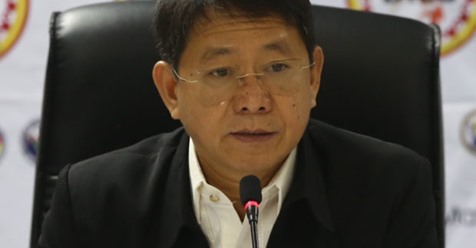
Sec. Eduardo Año
A “localized” lockdown to contain the spread of the new coronavirus in communities is the “best approach” to contain COVID-19 as it “surgically targets areas” where positive or suspected cases are concentrated, according to Sec. Eduardo Año of the Department of the Interior and Local Government (DILG).
There are 112 areas under such type of lockdown in Luzon and the Visayas, he said on Friday.
“Localized lockdown is like hitting COVID-19 at its source which has been proven to be effective especially in the 112 areas where it is currently being implemented. It really works since the hot zones areas are secluded from the rest of the community, hence, stopping the transmission to other communities,” said.
According to Año, the localized lockdown is a local government-led “zoning containment strategy” developed by the National Task Force (NTF) against COVID-19. With proper implementation, it was supposedly proven effective in curbing the spread of the disease at the community level, he said.
One street or entire town
Undersecretary Jonathan Malaya, the DILG spokesperson, said local governments, with the concurrence of their regional IATF, were encouraged to place areas—whether a street, purok, barangay or the whole city or municipality—under localized lockdown.
He said that of the 112 areas under localized lockdown as of June 21, 67 were in the Cordillera Autonomous Region (CAR); 19 in Cebu City; 18 in National Capital Region; one each in Cavite, Quezon, and Leyte provinces; and five in Cagayan de Oro City.
The 67 locked down areas in the Cordillera region include seven towns, 51 villages, and one purok (sub-village), a subdivision, five zones and two buildings, Malaya said.
As of June 26, CAR had recorded a total of 109 people confirmed COVID-19 cases, 62 of them active and 42 had recovered.
The region has a 1.8 percent case fatality rate, Malaya said.
Of the 18 locked down areas in Metro Manila, four are in Quezon City; nine in Parañaque City; two in Caloocan City; and one each in Muntinlupa City, Navotas City, and Malabon City.
Small scale
According to Malaya, community quarantines, or lockdowns, are “non-pharmaceutical interventions” (NPIs) which are public health measures not related to medicines or vaccines.
A “localized lockdown” is enhanced community quarantine on a small scale, he said.
On June 15, the NTF issued operational guidelines on the imposition of a “zoning containment strategy” against COVID-19 to “contain (and prevent) the spread of COVID-19; protect the Filipino people and mitigate social, economic and security impacts of the COVID-19 pandemic crisis.”
The areas under localized lockdowns may be categorized as either “critical,” “containment,” or “buffer” zones, or “areas outside buffer zones.”
In areas under localized lockdown, the entry of exit shall be “strictly prohibited” except for emergency instances such as medical treatments, according to the NTF memo.
The government shall set up and enforce screening procedures at all points of entry, informing the local population on the boundaries of the critical zone.
“The (local task force) shall ensure that all individuals within the (critical zone) are provided with or have access to essential goods and services, including but not limited to food and water rations, health care for the duration of the (enhanced community quarantine),” the NTF guidelines said.


